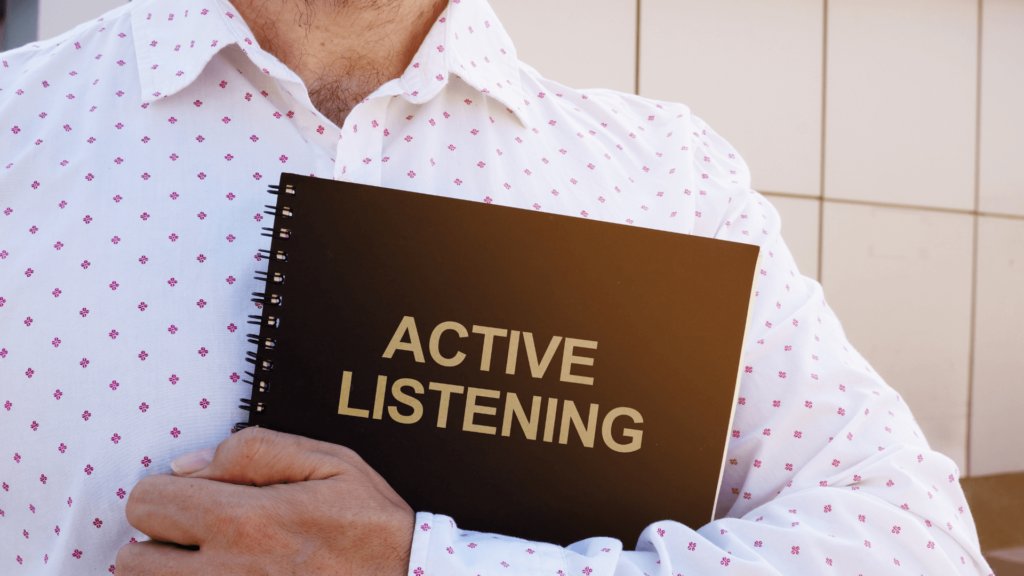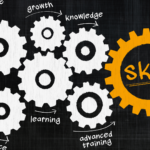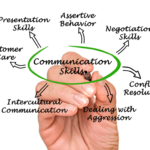Mastering the Art of Active Listening: Key Strategies to Enhance Communication Skills

In today's fast-paced world, effective communication skills are more important than ever.
One key aspect of successful communication is active listening.
Learning how to listen actively can greatly enhance your communication skills and improve your relationships, both personally and professionally.
In this article, we will explore the essential techniques and strategies for active listening, as well as the benefits it brings.
By understanding the basics of active listening and practicing it in your everyday conversations, you can become a better communicator and truly connect with the people you interact with.
So, let's dive in and discover how you can improve your communication skills through the power of active listening.
Understanding the Basics of Active Listening
Grasping the fundamentals of active listening is indispensable for effectual communication and constructing consequential ties.
Listening actively is more than just hearing what is being said; it requires being wholly present in the interchange and displaying authentic interest through established eye contact.
Noticing and utilizing non-verbal cues, like facial expressions and gestures, facilitates active listeners to gain an intense comprehension of the speaker's message.
In addition, posing open-ended queries encourages further discussion and permits a more compelling and profitable conversation.
Cultivating and exercising active listening strategies is essential for refining communication abilities and nurturing firmer connections with others.
Active listening is the practice of profound concentration and sensitivity, which leads to a greater insight into the speaker's reflections and emotions.
It consists of entirely submerging oneself in the exchange and actively engaging with the speaker's words.
By exhibiting active listening, people can create a secure and encouraging atmosphere where the speaker feels heard and appreciated. This degree of attentiveness fosters enhanced communication and assists in forming trust and affinity.
Active listening is an aptitude that can be polished and improved through several approaches and techniques.
Comprehending the rudiments of active listening is vital for effective communication in both private and corporate situations. By listening actively, individuals can gain a deeper understanding of others' points of view and encounters.
This comprehension permits more effective problem-solving, dispute resolution, and collaboration.
Active listening also helps to develop stronger relationships, as it communicates respect, sympathy, and an earnest desire to connect with others.
Whether in a personal relationship or the workplace, the capability to listen actively can significantly upgrade communication skills and contribute to overall success.
The Benefits of Active Listening
Reaping the rewards of active listening can greatly improve communicative abilities.
Showing genuine interest in the speaker, making eye contact, and being aware of non-verbal cues, for instance, body language and facial expressions, are all key parts of this technique.
Additionally, asking open-ended questions encourages further dialogue and advances the conversation. In general, mastering active listening is a crucial step in bettering communication skills, both at a personal and professional level.
Passive hearing is not enough; instead, one must listen actively. This means being fully present and giving full attention to the individual speaking.
Through active listening, it is possible to gain more insight into the speaker's perspective and acquire valuable information that would have otherwise been overlooked.
This deeper understanding can be beneficial for problem-solving, conflict resolution, and decision-making.
For best results, active listening should be employed by individuals seeking to better their communication skills.
Active listening creates a safe and supportive atmosphere for open dialogue. By paying attention to the speaker and responding with respect, validation, and empathy, trust and understanding are built.
This can lead to stronger relationships and improved collaboration and teamwork.
Additionally, by actively listening, individuals are able to interpret messages more accurately and reduce potential misunderstandings and conflicts.
All in all, the advantages of active listening are far-reaching and can be leveraged by anyone looking to improve their communication skills.
Strategies and Techniques for Active Listening
To develop one's communication proficiency, strategies and techniques for active listening are indispensable.
Focusing intently on the speaker is a successful approach, expressing respect and facilitating a congenial atmosphere for open communication.
To build a connection, displaying interest through eye contact is key.
Moreover, observing non-verbal cues such as body language, facial expressions, and intonation can provide valuable information about the speaker's emotions and attitudes, allowing for a suitable reaction and meaningful conversation.
Moreover, inquiring with open-ended queries encourages the speaker to share more data. By eliminating yes-or-no questions, a richer dialogue is possible.
These methods of active listening promote communication skills and facilitate successful exchanges in a variety of settings.
Practicing Active Listening in Conversations
In order to craft meaningful relationships and enhance communication, honing the skill of active listening is essential. This practice involves being attentive to the conversation, maintaining eye contact, and taking note of non-verbal cues.
Through active listening, we create an environment where people feel heard and understood, forging a connection of trust and mutual respect.
Asking open-ended questions can help to further explore the topic at hand and better understand the characters you are conversing with.
Active listening is more than just hearing the words spoken. It entails being alert to the nuances of the conversation; including tone of voice and body language.
Paying close attention to such details allows us to respond in a more sympathetic and thoughtful manner, thus constructing a more rewarding dialogue.
In both personal and professional relationships, active listening is a powerful tool. It promotes empathy and understanding, enabling us to comprehend the desires, anxieties, and outlooks of others.
Moreover, it helps to mitigate misunderstandings and avert conflicts, fostering healthier relationships and more productive atmospheres.
This is especially effective when it comes to resolving disputes, as it de-escalates tension and allows for plausible solutions.
By practicing active listening in conversations, we can strengthen our relationships and cultivate a harmonious environment.
Importance of Active Listening in Effective Communication
Fostering a connection through dialogue and unlocking insight into another's perspective - active listening is key to effective communication and building meaningful relationships. With eye contact and an awareness of non-verbal cues, individuals can actively engage in conversations, conveying their interest and attentiveness.
Asking open-ended questions to further explore the topic at hand, provides an opportunity for better understanding and connection.
It goes beyond simply hearing what is said; active listening requires deep concentration and empathy to get a different image of the speaker's viewpoint.
By honing this skill, communication skills can be significantly enhanced, benefitting both personal and professional relationships.
Overcoming Challenges with Active Listening
Stepping up to the plate and mastering the art of active listening can be a daunting endeavor. However, its importance in ensuring effective communication is undeniable.
One common obstacle lies in the potential for distractions to divert our attention away from the speaker.
To tackle this, it is important to find a quiet space and eliminate any potential disturbances.
Additionally, it is essential to stay focused and not allow our minds to wander or our mouths to interrupt.
Another challenge in active listening is the tendency to make assumptions or jump to conclusions about the speaker's message.
To counter this, it is key to keep an open mind and resist the urge to assume.
Asking questions and seeking further information can help us gain a better comprehension of the speaker's perspective.
A major issue in active listening is managing our internal dialogue. We may become preoccupied with our own thoughts or opinions, thus taking away from our ability to truly engage.
To overcome this, it is essential to practice self-awareness and consciously redirect our attention back to the speaker.
Taking deep breaths and reminding ourselves to be present can help us stay focused and actively listen.
Leave a Reply




Related Posts